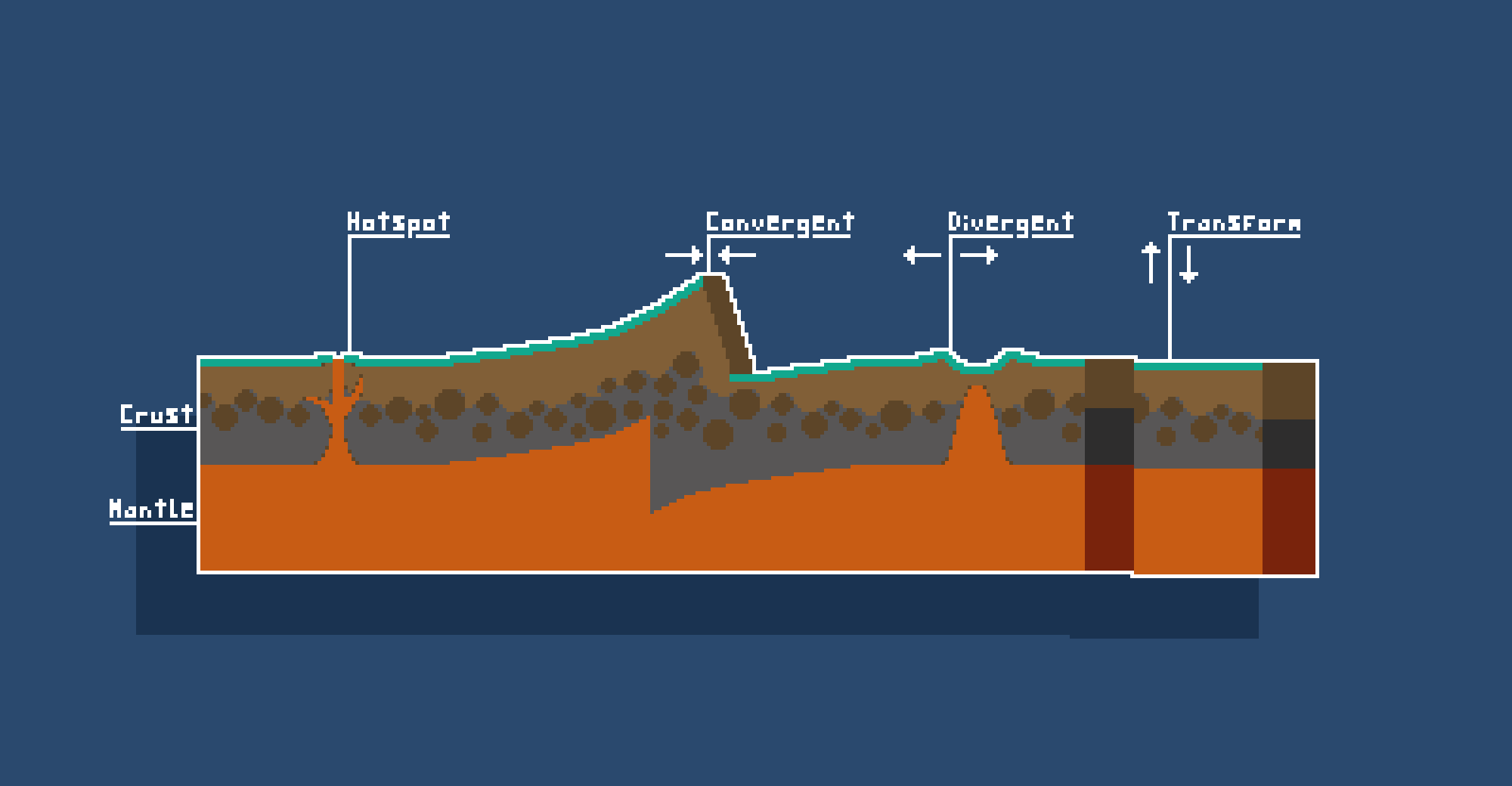This article is incomplete! It’s currently in the process of being written but contains significant missing information! You can help expand it by commenting or suggesting an edit through GitHub issues!
Tectonics are a scientific model which explains the behavior and interactions of geographic systems across the Plane, primarily those of tectonics and the mantle. The model explains the processes which lead to the occurrence of earthquakes, the activity of volcanoes, and the formation of mountains, islands, and more. The model is widely accepted and is the result of many years of research by geologists.
Besides topological data suggesting the validity of this model, such as that at the Great Tear, this model is also backed by the deceased God of Tectonics and many stars.
The model splits the Plane’s earth into two layers1, the top rocky crust, and the bottom liquid mantle. The crust is made up of tectonic plates, large slabs of solid rock which float atop of the liquid mantle. The mantle, impacted by gravity from the Harmonic Treaty, has a form of circulation similar to that of oceanic circulation. This movement pushes and pulls on the crust’s plates, creating movement and interactions between them.
Plate boundaries2 are where plates meet and are where geological phenomena like earthquakes occur. The creation of topographic features like mountains, volcanoes, and ridges also occur at these boundaries. Plate boundaries are divided into three types;
- Convergent boundaries are those where plates are colliding into one another. At these boundaries a portion of one plate is pushed underneath the other. The plate on the bottom is heated by the mantle and liquifies. This process leads to the creation of mountains and islands.
- Divergent boundaries are those where plates are moving away from one another. At these boundaries, as the two plates move apart, magma from the mantle rises to the surface and cools into new rock. This process creates rifts.
- Transforming boundaries are those where plates are sliding against one another. At these boundaries friction breaks apart the sides of plates, creating faults. Powerful earthquakes are created at these boundaries.
Hotspots are areas where the crust has become exceedingly thin or where the mantle is exceedingly hot, creating an upwelling of magma from the mantle which sometimes breaks through the surface of the crust. This process leads the formation of volcanoes outside of plate boundaries.
